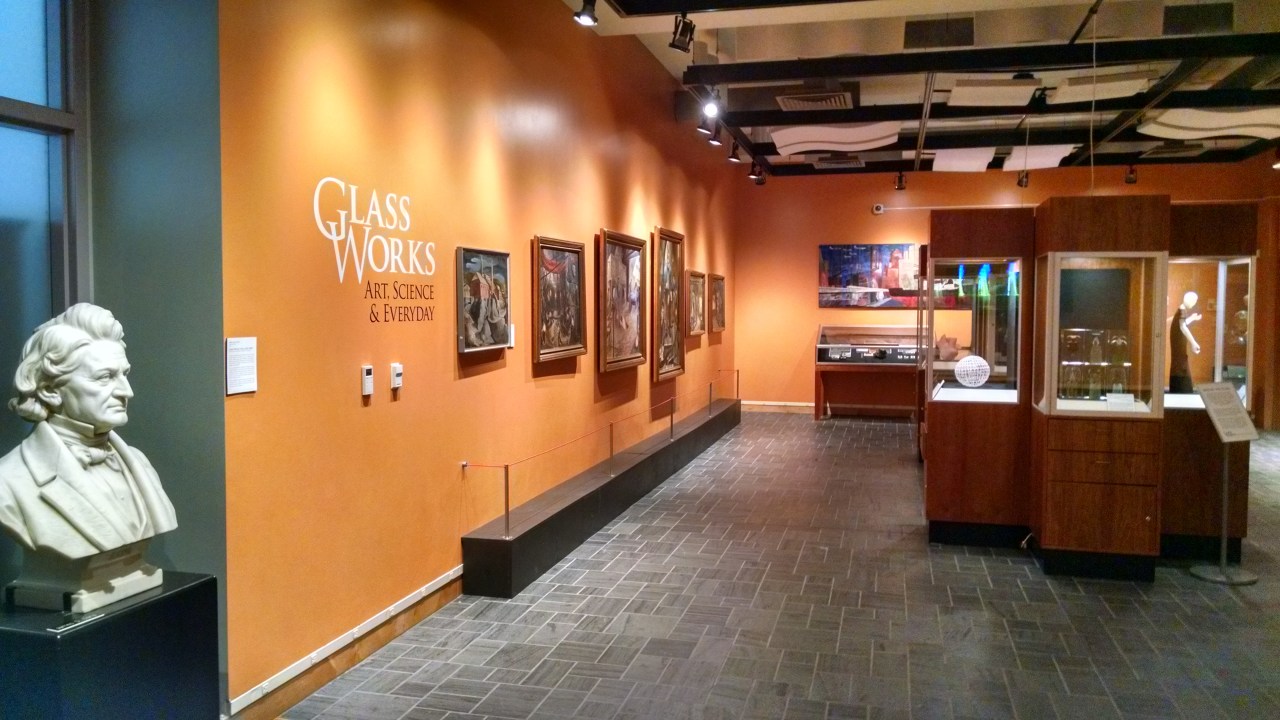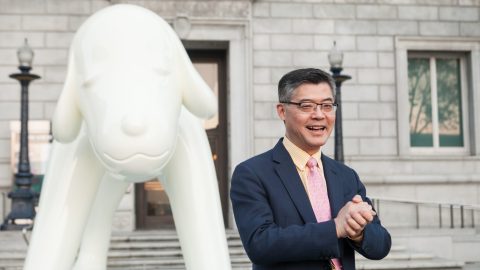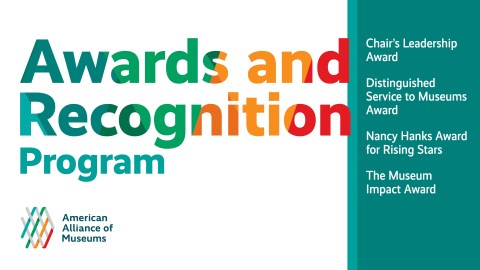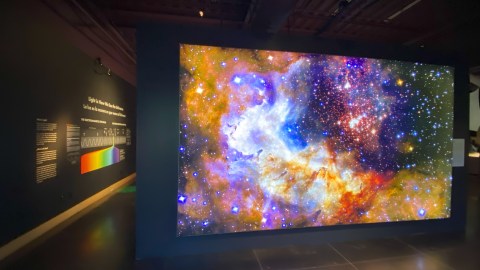
Over the course of 2016, ten small museums participated in an AAM pilot project called the Small Museum Accreditation Academy. The Academy, which was developed through a grant from the National Endowment for the Arts, was designed to help those museums strengthen their culture of excellence and be poised to apply for accreditation.
As the project manager for the Academy, I spent over a year working with my colleagues to plan the program, select an online learning system, develop the content, create eligibility criteria and an application process, and select the participant institutions from the applicant pool. We were excited to create a program that would address the longstanding issue that small museums felt challenged by the steps involved and time commitment required to become accredited.
Once the participant museums were selected and their staff teams briefed on the logistics, we launched them into the online learning system. The content was divided into eight modules, each of which featured a live webinar, resources to download, homework assignments for staff and governing authority members, and a discussion board on which participants could share their progress or ask questions. Participants interacted with AAM staff as well as with volunteer mentors, experienced small museum professionals who helped to deliver the webinars and answer questions.
Another key part of the Academy was evaluation; we asked participants to rate each content module as well as the overall experience. Those evaluations were an invaluable resource to us as we refined the course content over the duration of the program. They also revealed a key takeaway: the Academy didn’t work.
By “didn’t work,” I don’t mean that the program wasn’t useful to its participants or didn’t teach them important information about the requirements for Core Documents Verification and how to prepare for accreditation. In their evaluations, participants told us that it was a “tremendous experience,” “having access to AAM staff was super,” and “this was a very thorough program and amazing resource.” However, they also told us things like:
“The academy started out at a good pace but as the modules became more involved I would have liked more time.”
“We have significantly advanced our collective team awareness of requisite Core Documents content but did not secure the time within workloads (and emergent unforeseen circumstances) to dive deeply into Documents-production itself.”
“Size of staff and time given to complete the work were challenges we faced.”
And one university museum noted that “during the summer months, our faculty tends to be away from the university conducting research at other institutions or doing fieldwork. It was very difficult to get them to participate in academy exercises, attend webinars, and provide feedback from the first of May through the first of September.”
We had purposely spaced out the webinars and homework assignment deadlines so as not to overwhelm the museums with requirements but, clearly, finding the time to complete the work for the Academy as well as maintaining their job functions was just not a reasonable expectation for participants. AAM staff had hoped, and I think participants had too, that the Academy would offer a rich experience of learning, discussion, and feedback; instead, participants found themselves having to ask us for extensions as their busy museum calendars meant that they struggled to keep up with the expected workload.
AAM took away some key lessons from the Academy experience, which we have been keeping in mind as we develop resources and programs designed to help small museums (and their larger peers) strengthen their operations and successfully participate in the programs on the Continuum of Excellence. The most important lesson is that time is scarce in small museums, so content needs to be available to museums on their schedule rather than one imposed from the outside. Small museums can and will achieve the same standards as larger institutions, but may need increased flexibility in order to do so.
I speak for all of my Excellence colleagues when I say that the Academy was a rewarding experience for us, reminding us of the vital work that small museums do in their communities and their inventiveness in stretching their resources to accomplish great things. We appreciate the ten museums that took part in the Academy project with us and look forward to working with all of them on their future accreditation applications (whenever they’re ready – no hurry!).
Those ten museums were:
- Bainbridge Island Historical Museum, Bainbridge Island, WA
- Earth & Mineral Sciences Museum at The Pennsylvania State University, State College, PA
- Godwin-Ternbach Museum, Flushing, NY
- Wayne Stark Galleries, College Station, TX
- Monterey County Agricultural and Rural Life Museum, King City, CA
- Mountain Heritage Center – Western Carolina University, Cullowhee, NC
- Museum of Art – University of New Hampshire, Durham, NH
- Spartanburg Art Museum, Spartanburg, SC
- University of Mississippi Museum and Historic Houses, Oxford, MS
- Zanesville Museum of Art, Zanesville, OH
Allison Titman is an AAM Accreditation Program Officer. Prior to joining the Alliance four years ago, she worked in small historic house museums in Maryland. She continues to engage with the small museum field through her service on the board of the Small Museum Association.








Re: “Small museums can and will achieve the same standards as larger institutions, but may need increased flexibility in order to do so.”
I am pleased that the Academy project identified probably the most important problem facing small museums, namely the lack of time, tools, & resources available to them to implement professional standards. I have been arguing this point since 1990 (see link below).
I must make it clear here that my point makes no argument against the ultimate value of adherence to professional museum standards. It is simply aimed to bring the issue of the impact of the ongoing inflation of professional museum standards (cf. Weil 1988: 32) into a discussion where it can be analysed critically.
In Canada, research reported in 2001 is critical here:
I believe that all concerned have ignored an important perspective on one potential means of addressing the difficulties encountered by small museums. It was presented by Philippe Dubé, Professeur titulaire et Directeur du Laboratoire de muséologie et d’ingénierie de la culture at l’Université Laval, Québec City, based on research in the province of Quebec, Canada.
In a 2001 Canadian Museums Association journal Muse article titled “Towards a new generic model for small and medium-sized museums,” the Prof. Dubé identified the widespread problems of insufficient financing, a “general state of fatigue,” and “burnout” among museum workers. Professor Dubé argues this state of affairs is due in large measure to an ideal operational framework defined from outside the institution that is based on [BOLD]“an official definition that small and medium-sized museums simply cannot meet.”[bold] This definition of a professional standard museum creates “a trap that makes museum work increasingly complex, and even [BOLD]absurd[bold]” [BOLD emphasis added] (Dubé 2001, 8). Citing Stephen E. Weil (1988), Dubé recommended that we look for an alternate model of what small and medium-sized museums can, could, and should be. Unfortunately, the author reports that his proposal has received scant attention in the museum world (Dubé 2007).
One unexamined–yet I believe highly significant–aspect of your “key lessons” is that the AAM defines museum standards as “generally accepted levels that [BOLD]all[bold] museums are expected to achieve” [BOLD emphasis added] (American Association of Museums 2006, 1, 12). From the perspective of many overloaded museum workers, however, this assertion arguably cannot be understood as anything less than an impossible–and indeed rather insidious–goal given the extensive content of the criteria in question and the inadequate levels of resources available to implement them.
I believe strongly that the AAM needs to consider the advice of Prof. Dubé while considering the required “flexibility” needed for small museums to succeed. Arguably, this requires separate standards, or–at bare minimum–graduated standards for small museums.
See my entire documented argument in the document “Thistle Fully Loaded Camels 2017” at https://solvetasksaturation.wordpress.com/task-saturation-documents-background-analysis-solutions/ & all the posts on my Solving Task Saturation for Museum Workers blog (first Google hit).
Small museum paid staff & volunteers who–as your project found–tend to be chronically overworked & stressed-out need help–the sooner the better!
During Dental School at the University of Michigan in the 1970s, my husband completed several computer courses at his own pace. Being a fast finisher, he was done with them quickly. Others took more time and that was OK, too. There didn’t seem to be any pressure regarding the rate of completion.
Could the Academy coursework be self paced by each individual small museum’s staff? That way, when annual planning is done, completing portions of the Academy could be built into the plan at a rate which is reasonable for that particular organization.
I work at a very small museum with limited staff. We are all expected to wear many hats and preform a variety of services. It might take us years to complete something that another small museum (with better funding) might do in half the time. But in the end, we would still get there…
This is a great idea – and if this program is really in BETA, then what should be measured is the actual time it takes this group of museums to go through the process. This data would then be potentially useful for similarly sized museums in planning their own path to excellence.
I am so glad to read this blog entry. I must admit, as someone who has mostly worked at small museums (currently 1 of 2 staff members!), I have never felt that AAM really served me or my institutions. I have been to conferences and been a member for my entire career, but everything they do seems to be geared towards larger museums with much larger budgets than mine. I’m thankful and a bit relieved that they seem to be realizing this!
I, too, appreciated the candor with which the author addressed this points. After spending countless hours devising a program to shepherd smaller museums to accreditation standards, it must be somewhat heartbreaking to concede that the participating organizations still found the process difficult to manage. The museum for which I sometimes work/mostly volunteer would benefit enormously from accreditation (and is more than sufficiently deserving of it, particularly insofar as its collections are concerned), but without a full-time staff member dedicated to the cause, it seems unlikely to happen in the near future. Our collections and facilities are museum-quality (if on the smaller side), and accreditation would expedite our ability to secure loans from other, larger museums for more comprehensive exhibitions, so that’s a great pity. I do so hope the AAM staff are able to leverage this program’s outcomes to develop a more measured/graduated accreditation process that takes into account the more strenuous individual demands on a smaller institution’s staff. We are anxious to join but slightly intimidated by the necessary workload!
Thanks a lot for sharing such valuable inputs. Just I want to add few more.
1. Central Government (Cultural Ministry or Museums Highest Authority in Govt>) must organize the best training programs for state Museums with taking the help of National Museum and international experts.
2. All state museums organize same training program for local level museums.
if this chain will continue for all type of training and
3. There must be central monitoring committee for funding and create a strong network of all small museums, state museums and National Museum then it will be better for all.
Great write up especially with differences in museum studies and museology. I run a training programme in Heritage Studies and most of the time we have compounded these terms.